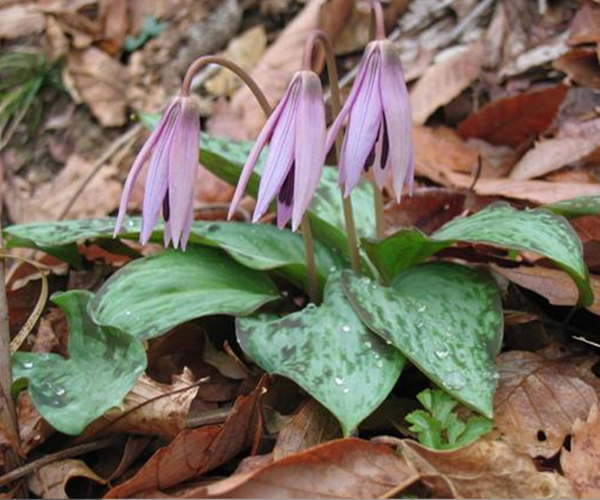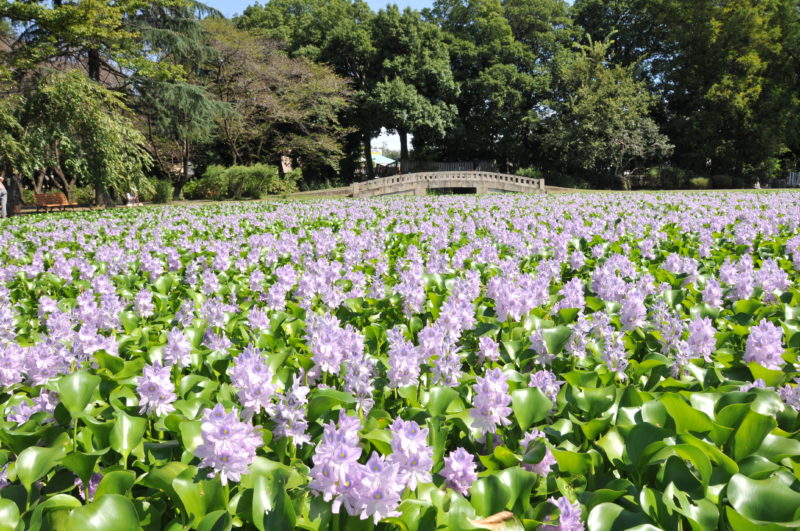Sightseeing Spots
Search Results314

“Kiyasse Hanyū” is the nickname for Hanyū City Mitakaya agricultural and forest park. This park, with an area of roughly 3.6 hectares, has a flower-filled “Shiki no Oka” (four seasons hill), a production building selling local vegetables harvested fresh each morning, a beer factory that manufactures Hanyū’s local beer “Kobushi Hana Beer,” and a restaurant to enjoy handmade udon. Inside the park, there is playground equipment for kids, and events and vegetable harvesting experiences are held year round.

This is the birthplace of “Kan’ichi Shimofusa,” a musician and producer of many famous nursery rhymes. It is said that the atmosphere of the old town of Ōtone was his inspiration when composing songs such as “Tanabatasama,” “Nogiku” and “Hanabi.” “Ōtone Koshihikari” rice, harvested with plentiful water and one of the leading varieties “delicious Koshihikari” rice from Saitama, is sold here as “Dōyō no Furusato Ōtone" (hometown of nursery rhymes, Ōtone).

Jōshinin Hyakutai Kannon-dō, commonly called “Sazaedō,” was built to mourn the victims of the great volcanic eruption of Mt. Asama in 1783. The architecture has a rare helical structure with two exterior layers and a three-layer interior spiral corridor, enabling worshippers to practice the Buddhist etiquette of walking around a corridor three times in a clockwise direction (unyosanso). The first layer enshrines the Kannon of the Chichibu Sacred Site No. 34, the second layer enshrines the Kannon of the Bando Sacred Site No. 33, and the third layer enshrines the Kannon of the Saikoku Sacred Site No. 33. The reception desk is located at the Honjo City Tourism and Agriculture Center.

This is the oldest remaining gravity dam for agricultural use in eastern Japan. The weir of the dam and its management bridge are both registered as tangible cultural properties of Japan. The area is also known as a famous place for fishing for crucian carp and Japanese smelt (wakasagi). You can also enjoy the cherry blossoms in spring and vividly colored leaves in autumn.

A shop that sells handmade soba made from 100% local buckwheat flour. They also use ingredients which are grown pesticide free or use 50% lower pesticides certified by the prefecture. Izumi-tei offers dishes made from ingredients at the peak of freshness and cultivated with the highest level of safety. Soba making experiences are also available with a reservation.

Established during the late Edo Kaei era (1850), Japanese sake, ume liqueur and sake lees are sold at this old-fashioned sake brewery and Taishō period store. Visitors can enjoy a cozy experience that can only be had at a small brewery. If touring the brewery, you will also get a small sake cup as a present. You can taste and compare various alcohols kept at different temperatures, and sake tasting games are also on the menu. Please consult with us regarding the content experience and pricing. Tours are held regardless of the season, but sake is prepared during the winter. There are times when it is difficult to hold tours during the sake preparation season.

You can experience indigo dyeing, choosing between a handkerchief or bringing in a small item of your own! Dyeing experience participants are also free to visit the adjoined archive museum.

The Katakura Silk Commemorative Museum is built inside of Kumagaya Factory, the cocoon warehouse of the last remaining silk manufacturing plant of Katakura Industries, and is recognized as a Heritage of Industrial Modernization by the Ministry of Economy, Trade, and Industry. To preserve and pass on the company's 121-year history of silk production, the museum displays the machinery used to produce silk at Kumagaya Factory, and visitors can watch the entire process from cocoon to raw silk.

At our hot spring you can enjoy low mineral content water typical of the top hot springs in Japan in a traditional Japanese-style outdoor bath. You can also use the ganban`yoku hot stone bath, reclining chairs, massage machines and the popular free relaxation area. There is even a high-concentration carbonated spring, which garners attention from the medical industry, making our facility the ideal place for a full day of relaxation.

A shrine dedicated to the mythological god of agriculture, Takamimusubi. The shrine was destroyed by fire in 1590, and rebuilt by the lord of Oshi Castle, Abe Masayoshi. Annual festivals are held, such as Setsubun (seasonal division) on February 3rd, Tainai Kuguri (passing through the womb) on June 30th, and Tori no Ichi (Festival of the Rooster) on December 8th.

This brewery was established in 1805 when Omi merchant, Shoemon Yokota, traveled from Edo to Gyoda City in search of good water. The area closest to Tone River and Arakawa River was found to have plentiful groundwater and this brewery continues to produce exquisite sake made from it. Employing Nanbu-style brewing techniques, known for producing a high quality Ginjo sake, they produce sake in which one can taste the spirit of the brewer, a highly regarded "sake of excellence."

The Hachimanyama Kofun (Mount Hachiman megalith tomb) in Gyoda City is the main tomb of the group of Wakakodama tombs found in this area. Restored in 1981, it is estimated to have been built in the 7th century and has a diameter of 80 meters. The “Urushi Nuri Mokkan" (lacquered wooden casket) was excavated from the stone hut in almost perfect condition, with those buried inside assumed to have been people of power. It is called “Kanto-no-Ishibutai" (the stone stage of Kanto) because it is similar to the Ishibutai Kofun (stone stage tomb) at Asukamura of Nara Prefecture.

As spring approaches, the Asian fawn lily blooms throughout the mountains and forests of the Tsuburata district. The area is bustling with hikers during the peak bloom season of late March to early April.

Tabi to Kurashi (Tabi and Life) Museum was originally a factory of tabi socks delivering to tabi stores under the name Bokuya Honten (Main Branch). The factory was reborn as a museum, retaining most of the original factory’s appearance. At the museum, demonstrations by individuals who used to be tabi craftsmen can be seen, and your own original tabi (additional cost) can be made every second Sunday of the month.

Reopened in April 2021 as a tourism and souvenir center! This store has a modern Japanese atmosphere that stays true to Gyoda City, which has been recognized as a Japanese Heritage site. There are a wide range of 150 different types of products available for sale from around 50 brands, including local goods such as fashionably designed tabi (split-toed socks), Minamikawara slippers made of colorful fabrics from Africa and other foreign countries, "Gyoda no gyoza" (dumplings) made from local flour, Narazuke pickles, Jumangoku Manju (steamed bun), Wataboku Milk, and more. So can also rent bicycles here, so be sure to stop by on your way to sightseeing.

Gyōda Hachiman Shrine is called “Fūji no Miya" (Palace of Sealing) for its secret prayer method which is believed to help children sleep, prevents nervousness, cancer, diseases, bad habits and dementia in the elderly. In the precincts, there is a “shrine of the eyes,” the Kasamori Inari Shrine which enshrines the god of eczema and beautiful skin, along with “Okuninushi Shrine” that enshrines Oshi Castle’s 7 lucky gods. Recently, the “nade momo” (patting peach) is said to be a place for spiritual energy, and is famous for the god of warding off suffering from illness and misfortune.

Oshi Castle is one of seven famous castles in the Kanto region, built during the civilization years of the Muromachi period. It is known as an “Uki-jō (Floating Castle),” as it is said to have endured the flooding of Ishida Mitsunari during Toyotomi Hideyoshi’s suppression of Kanto. The story of this castle was the model for the movie “Nobō-no-Shiro (The Floating Castle).” It is currently listed as one of Japan's Top 100 castles. The “Oshijyō Gosankaiyagura (Oshi Castle Three Story Turret)” was torn down during the Meiji period and rebuilt in 1988, with the inside turned into an exhibition room of the local museum, and a view of the entire city can be seen from the top floor.

A famous cherry blossom spot since the Edo period (1603-1868) and one of Japan's Top 100 Cherry Blossom Spots chosen by the Japan Cherry Blossom Association. Around 500 Yoshino Cherry Blossom trees bloom in great splendor on a 2 meter stretch of the Arakawa riverbank. During the Kumagaya Cherry Blossom Festival held from late March to early April, revelers can also enjoy nighttime illuminated cherry blossoms.

Harvesting experience events are held throughout the year, with tomato and strawberry picking in the spring, eggplant and blueberry picking in the summer, chestnut picking and sweet potato digging in the autumn, and harvesting broccoli, onions, and radishes in the winter. Also, barbecue, camping (mess kit for rice making), and Kazo City’s famous handmade udon workshops are available. From late March to the end of November, there are stage shows of popular children's characters such as Pretty Cure, Kamen Rider and Anpanman. The shows take place on the outdoor stage on clear weather days, and inside the family building hall on rainy days.

This spot located nearby Ōshi Castle is famous for its water hyacinth. The park's Blue Lake (Aoi no Ike) displays beautiful water hyacinth when in season. The square is also known for its 200 cherry blossom trees. There is also the "Literary Monument of a Country Teacher“ (Inaka Kyōshi-no Bungakuhi) of Katai Tayama. A verse from the book Inaka Kyōshi, “The road to Yori was long…,” is engraved on the monument.

From mid-June to early August, 12,000 stocks of 42 different types of lotus flowers bloom on the surface of this lotus pond. The Gyōda lotus (ancient lotus) is a primitive form with few petals; it is said this variety of lotus is from about 1,400 to 3,000 years ago. Lotus flowers are best viewed midmorning. There are aquatic plant botanical gardens, aquatic bird lakes, peony gardens, plum tree groves, and a spot for flower viewing (hanami) cherry blossom trees, making it a place to go to feel the beauty of nature all year round. In addition, from mid-July to mid-October, rice paddy art is at its prime and can be viewed from the Ancient Lotus Hall’s Observation Room. The rice paddy art of Gyōda City started in 2008, with annual rice transplanting taking place with the help of several volunteers and participants. Not only are the designs original, but some have been featured in movies, TV shows, games. In 2015 it was recorded in the Guinness World Records as “the world’s largest (rice paddy art).”

This is the site of Hatakeyama Shigetada's mansion, which is maintained as a park. In the park there is a five-story pagoda, said to be the grave of Shigetada and his vassals, a well said to be where Shigetada had his first bath after birth, and a bronze statue of Shigetada himself.

This museum exhibits the collection of pictures and sculptures owned by art collector Tabei Jinichi. In addition to the exhibitions of famous painters, the artworks of artist Konoki Mioku are also permanently exhibited.

At the Haniwa building located inside the Saitama Kofun Group, anyone can experience making their own Haniwa with the help of an instructor. Creating a Haniwa takes 3 steps: molding for 90 to 120 minutes, drying for about a month, and finally heating the Haniwa in the kiln located inside the building for around 7 hours at 800℃. Once the Haniwa is completed, it can either be retrieved in person or be delivered and paid for on arrival.
This site uses cookies to improve the user experience. If you continue to browse, you consent to the use of cookies on this site. Accept
CONTACT
